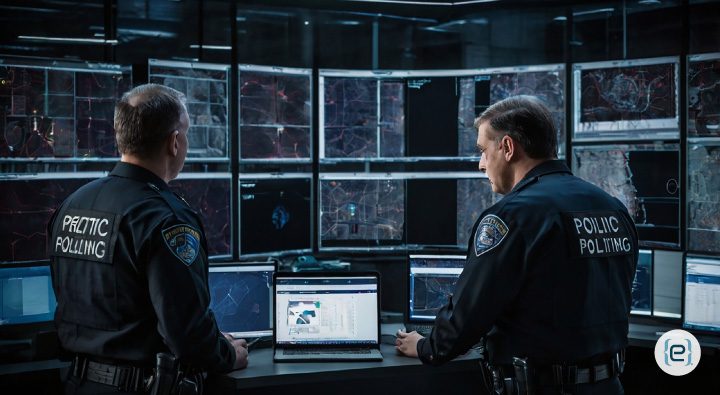The Role of IT in Modern Policing
On one side, crime is on the rise while criminals are updating their tactics. To keep up with these demands, police departments are adopting information technology (IT) solutions that help them work faster and respond more quickly. For law enforcement strategies, advanced technologies can be utilized by police departments to improve internal operations and communications with other agencies. This, overall helps them provide better service to their communities.
Real-Time Data Analytics
One of the prime ways police response is improved through IT is real-time data analytics. Today, police forces have data from hundreds of feeds, ranging from social media to surveillance and community policing. This data can be used to identify patterns in crimes and deploy resources more efficiently—putting the right person on the ground at just the right time. For instance, if a certain neighborhood experiences an unusual spate of property-related crimes, police can increase patrols to that community, becoming more proactive than reactive.
Mobile Technology in Policing
Further to the use of mobile technology, another important aspect of modern policing is the ability for field officers to instantly access vital information from smartphones and tablets, which come with specific applications. These include criminal databases, warrant checks, and real-time data on active incidents. This real-time data empowers officers to make informed decisions instantly, allowing them to respond more effectively in emergencies and better manage field events.
Integrated Communication Systems
Additionally, the application of integrated communication systems enhances teamwork between different police departments. When you have a single communication platform, you can share information from anywhere at any time without worrying about what system your counterparts in other departments or jurisdictions may be using. It allows officers to share essential information in real-time, which reduces response times and enhances effectiveness. For example, in a multi-agency operation, shared communication channels allow officers to communicate information on what is happening right now and how the situation is evolving.

Training and Readiness
IT solutions have huge importance in improving training and readiness for police personnel as well. VR and simulation technology can create virtual scenarios for officers with realistic aesthetics that can be dangerous in real-life situations. These training simulations immerse officers in various situations they could potentially confront on duty, including active shooter events and community policing contacts. Preparing officers with advanced training methods is crucial for effective policing.
Data-Driven Decision Making
IT can also help with data-driven decision-making, which is another area where IT plays a significant role in how police work. Departments can build predictive policing algorithms to analyze historic data for identifying potential crime hotspots. This proactive approach enables law enforcement agencies to allocate resources effectively, sending officers into the right places at the right times and preventing crimes before they happen.
Transparency and Accountability
The integration of body-worn cameras is another crucial aspect of utilizing IT in police operations. Not only do they allow for accountability and proof, but they also serve as invaluable evidence when incidents arise. All actions are recorded by officers during interactions with the public, building a sense of trust with the officers on patrol while giving citizens confidence that actions will be appropriately reviewed.
Cybersecurity in Law Enforcement
As we grow ever more dependent on technology, the need to secure our data from cyber threats should be a top concern in police departments. Using encryption and strong access controls can create a model for systems to deliver information securely while keeping it confidential. To maintain the trust of the public, organizations must ensure that they manage data safely, as the public has a right to believe this.
Partnering with Managed Service Providers
Collaboration with Managed Service Providers (MSPs) can provide an additional layer that police departments leverage to stay one step ahead of criminals. MSPs offer the expertise needed to deploy and run technology solutions that law enforcement agencies require to focus on their core mission—public safety. By partnering with MSPs, police departments can access the newest technology and ongoing support to keep their IT infrastructure safe.
Conclusion
In summary, making policing response an efficient cybernetic operation is imperative in today’s world where IT has taken over all walks of life. Data analytics, mobile and communications technology integration, advanced training procedures like AR/VR simulations, and robust cybersecurity can work hand in hand to enhance police department capabilities, allowing officers to best serve their communities. Technology will be essential for ensuring public safety and building strong community relations as law enforcement adapts to everyday challenges. If you want to learn more about how eMazzanti can help your organization implement these technologies, contact us today.







